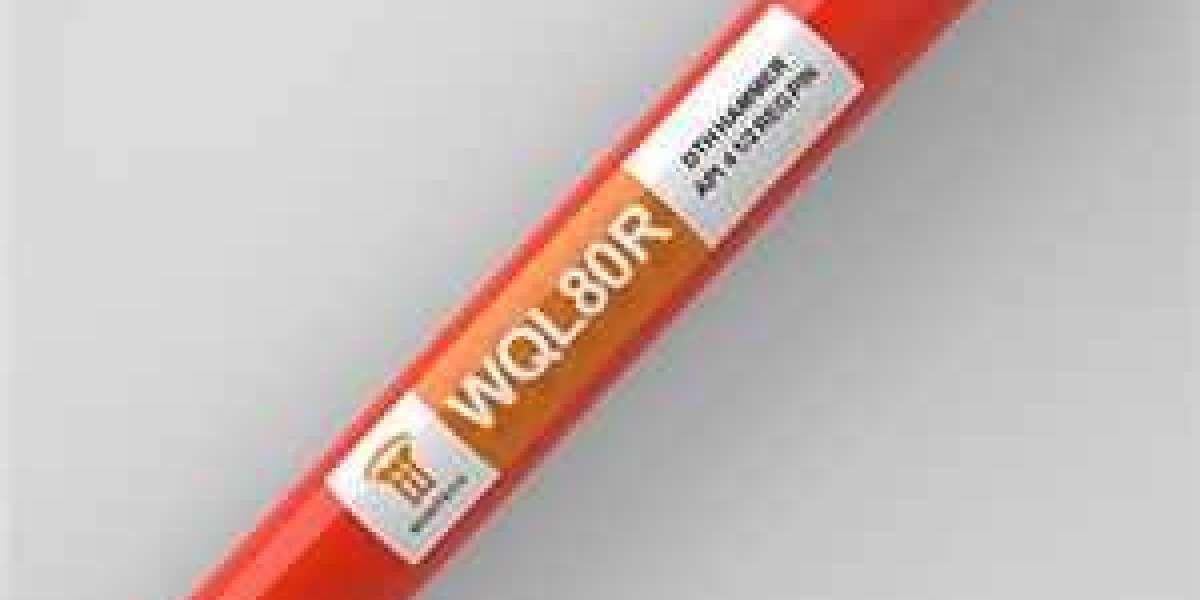Original Title: 6 Processes of Open-pit Mining from Perforation, Blasting to Dumping The mining technology of open-pit mine is relatively simple, mainly including drilling, blasting, mining, loading and transportation, and rock dumping. Next, we will talk about the mining technology of open-pit mines in detail. I. Perforation work Perforation is the first working procedure of open pit mining. In the whole process of open pit mining, the cost of perforation accounts for about 10%-15% of the total production cost. 1. Down-the-hole drill The down-the-hole drilling machine has the advantages of large drilling angle change range, high mechanization degree, reduction of auxiliary operation time, improvement of the operation rate of the drilling machine, flexibility of the down-the-hole drilling machine, light equipment weight and low investment cost, and particularly can control the ore grade by drilling various inclined holes, eliminate toes, reduce large blocks and improve the blasting quality. Therefore, the down-the-hole drill is widely used in small and medium-sized mines at home and abroad, which is suitable for medium hard rock drilling. 2. Rotary drill Rotary drilling rig is a new type of drilling equipment developed on the basis of rotary drilling rig, which has the characteristics of high drilling efficiency, low operation cost, high degree of mechanization and automation, and is suitable for drilling operations of various hardness of ore and rock. At present,dth rock bit, it has become a common drilling equipment used in open-pit mines all over the world. 3. Rock drilling jumbo Drill jumbo is a new type of drilling equipment with the development of mining industry. One or a plurality of rock drills are arranged on a special drill boom or a rack together with an automatic propeller, and a traveling mechanism is arranged, so that the operation of the rock drill is mechanized. II. Blasting work The purpose of blasting work is to break the hard solid ore rock and provide the excavation material with appropriate size for mining and loading work. In the total cost of open-pit mining, blasting cost accounts for about 15% -20%. The quality of blasting not only directly affects the efficiency of mining, transportation, coarse crushing and other equipment, but also affects the total cost of the mine. 1. Shallow hole blasting Expand the full text The diameter of the hole used in shallow hole blasting is small, generally about 30-75 mm, and the depth of the hole is generally less than 5 meters,fastest dth hammer, sometimes up to about 8 meters. If the drilling jumbo is used for drilling, the depth of the hole can be increased. Shallow-hole blasting is mainly used for the excavation of open-pit mines or quarries, caverns and tunnels with small production scale, secondary blasting, the treatment of new open-pit mine hills, the formation of hillside open-pit single-wall ditch transportation channels and other special blasting. 2. Deep-hole blasting Deep-hole blasting is a blasting method that uses drilling equipment to drill deeper boreholes as the charging space of mining explosives. The deep-hole blasting of open-pit mine is mainly the production blasting of bench. Drilling equipment for deep-hole blasting mainly includes down-the-hole drill and roller drill. It can be used to drill vertical deep holes or inclined blast holes. The charging of inclined blast holes is more uniform, and the blasting quality of ore and rock is better, which creates good conditions for mining and loading work. In order to reduce the seismic effect and improve the blasting quality, such measures as millisecond blasting in large area, interval charging in blastholes or bottom air interval charging can be taken under certain conditions, so as to reduce the blasting cost and obtain better economic benefit. 3. Chamber blasting Chamber blasting is a blasting method in which more or a large amount of explosives are loaded in the tunnel of the blasting chamber. Open-pit mines are used only during the capital construction period and under specific conditions, and quarries are used when conditions permit and when the demand for mining is high. 4. Multi-row hole millisecond blasting method In recent years, with the rapid increase of the excavator bucket capacity and the production capacity of the open-pit mine, the normal excavation blasting of the open-pit mine requires more and more blasting quantity each time. Therefore, large-scale blasting methods such as multi-row-hole millisecond blasting and multi-row-hole millisecond extrusion blasting are widely used in open-pit mining at home and abroad. Advantages of multi-row millisecond blasting: The one-time blasting quantity is large, the blasting times and the blasting avoidance time are reduced, Mining Drilling Equipment ,overburden drilling systems, and the utilization rate of the stope equipment is improved; The broken quality of ore and rock is improved, and the boulder rate is reduced by 40 to 50% compared with that of single-row hole blasting; The efficiency of perforating equipment is increased by about 10% -15%, which is due to the increase of working time utilization coefficient and the decrease of the number of operations of perforating equipment and filling area after blasting; Improve the efficiency of mining and transportation equipment by about 10% -15%. 5. Multi-row hole differential extrusion blasting method It refers to the multi-row millisecond blasting in the case of residual muckpile in the working face. The existence of muck pile creates conditions for extrusion. On the one hand, it can prolong the effective action time of blasting and improve the utilization of explosive energy and crushing effect; on the other hand, it can control the width of muck pile and avoid the scattering of ore and rock. The millisecond interval of multi-row hole millisecond extrusion blasting should be 30% ~ 50% longer than that of ordinary millisecond blasting, and 50 ~ 100ms is often used in open-pit mines in China. The advantages of multi-row hole millisecond extrusion blasting are as follows: (1) The ore rock crushing effect is better. This is mainly because the front is blocked by the slag heap, and each row of boreholes, including the first row, can increase the charge and be fully crushed under the extrusion of the slag heap; (2) The muckpile is more concentrated. For the mine using railway transportation, it is not necessary to dismantle the road before blasting, so as to improve the efficiency of mining, loading and transportation equipment. The disadvantages of multi-row hole millisecond extrusion blasting are as follows: (1) High explosive consumption; (2) The working platform is required to be wider to accommodate the ballast pile; (3) The blasting pile height is large, which may affect the safety of excavator operation. III. Blasting measures near the slope With the downward extension of the open-pit mine, the problem of slope stability has become increasingly prominent. In order to protect the slope, the blasting near the slope should be strictly controlled. According to the experience at home and abroad, the main measures are millisecond blasting, presplitting blasting and smooth blasting. 1. Adopt millisecond blasting to reduce vibration One of the main functions of millisecond blasting is to reduce the seismic effect of blasting. In order to give full play to the shock absorption effect of millisecond blasting, the key is to try to increase the number of blasting segments and control the millisecond interval. 2. Adopt presplitting blasting to isolate the slope. The presplitting blasting near the slope is to drill a row of dense parallel boreholes along the slope boundary, fill each hole with a small amount of explosives, and detonate before the excavation zone is blasted, so as to obtain a crack with a certain width and running through each borehole. Due to the separation of the excavation zone from the slope by the pre-fracture, the seismic wave of the subsequent excavation blasting will produce a strong reflection on the fracture surface, which will greatly reduce the seismic wave passing through it, thus protecting the slope. 3. Adopt smooth blasting to protect the slope. Smooth blasting near the slope is to drill a row of dense parallel boreholes along the boundary line, fill a small amount of explosives in the holes, and then blast after the excavation of boreholes, so as to form parallel rock walls along the dense boreholes. The difference between smooth blasting and presplitting blasting lies mainly in the initiation time. The initiation of smooth holes is later than the previous rows of excavation holes, usually 50 to 75 ms later. In addition, another measure is to control the blasting of the last few rows of boreholes. The explosive quantity and resistance line of the last rows of boreholes near the slope should be reduced, which is called "buffer blasting", which can reduce the damage of drilling blasting to the slope. IV. Purchase, loading and transportation Acquisition and loading: Mining and loading operation is to use loading machinery to excavate ore rock directly from the ground or blasting pile, and load it into the carriage of transport machinery or unload it directly to the designated place. It is the central link in the process of open-pit mining, and other production processes such as drilling and blasting, transportation and so on serve for mining and loading. Main mining and loading equipment: excavator, dragline, hydraulic shovel and rubber-tyred front loader. Transportation In the process of open-pit mining, the capital construction investment of mine transportation accounts for about 60% of the total investment of mine capital construction, and the transportation cost and labor volume account for more than half of the total ore cost and labor volume respectively, which shows the important position of transportation in open-pit mining. Transportation modes of open-pit mine: automobile transportation, railway transportation, belt transportation, slope skip lifting transportation and combined transportation, among which dump truck transportation is the most common. Mining and transportation are inseparable, and they influence and restrict each other. At present, the development trend of mining and transportation technology is mainly reflected in the large-scale mining and transportation equipment, the integration and continuity of mining and transportation links, and computer automation. 5. Rock discharge Rock dumping is the operation of the transport terminal, which transports the stripped topsoil and waste rock to the waste rock yard for disposal. Rock dumping process: rock dumping by railway transportation, road transportation and belt transportation. 6. Dump Waste dump (waste rock dump): a place where stripped materials are piled up, which refers to the place where mining wastes are discharged in a centralized manner. According to the stacking sequence, the dump can be divided into single-bench dump,DHD Drill bit, covering multi-bench dump and slope-pressing multi-bench dump. The dump is mainly divided into road transport dump, railway transport dump, belt transport dump and hydraulic transport dump according to the dumping process. Return to Sohu to see more Review of past issues Responsible Editor:. wt-dthtools.com
לחפש
פוסטים פופולריים
-
 С легкостью заказываем документы в онлайн магазине Russian Diplom
על ידי sonnick84 sonnick84
С легкостью заказываем документы в онлайн магазине Russian Diplom
על ידי sonnick84 sonnick84 -
 Что необходимо из оборудования для изготовления документов?
על ידי sonnick84 sonnick84
Что необходимо из оборудования для изготовления документов?
על ידי sonnick84 sonnick84 -
 Советы эксперта, что позволят легко приобрести диплом
על ידי sonnick84 sonnick84
Советы эксперта, что позволят легко приобрести диплом
על ידי sonnick84 sonnick84 -
 Stair Lifts and Climbing Devices Market Size, Key Market Players, SWOT, Revenue Growth Analysis, 2023–2032
על ידי Adams mark
Stair Lifts and Climbing Devices Market Size, Key Market Players, SWOT, Revenue Growth Analysis, 2023–2032
על ידי Adams mark -
 Быстрое Оформление Дипломов: Надежно и Легально
על ידי worksale7775 worksale7775
Быстрое Оформление Дипломов: Надежно и Легально
על ידי worksale7775 worksale7775


